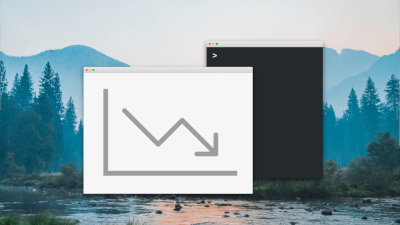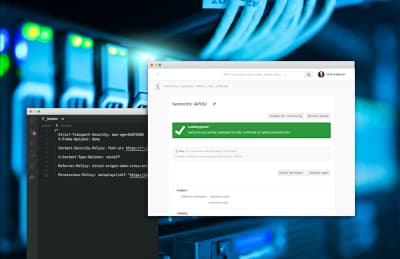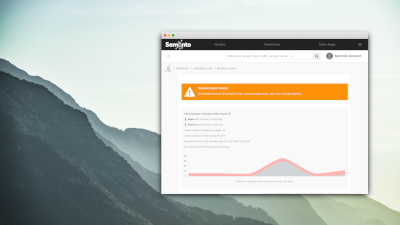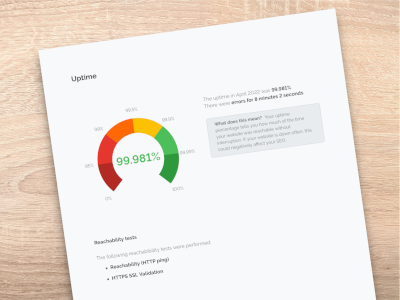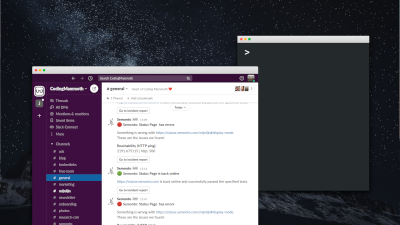What are broken links?
Broken links are links that, for some reason, cannot reach the target to which they are referring. Simply put: the link no longer works. This can be for a variety of reasons.
Internal broken links versus external broken links
Internal links are links from your website to a different page on the same website, for example from one blog post to the next one, of from your homepage to your contact page. But internal links can also point to other types of targets, like images, videos, or iles that are stored on your server. For example, a restaurant can have its menu stored as a PDF on the website.
External links (or outbound links) are outgoing links on your website that point to an external target. If you have a portfolio on your website, it could contain references to the websites of your clients. If one of those clients no longer exists, your link can break. In other words: broken links are not always within your control.
What causes a broken link on my website?
A broken link can be caused by a number of things:
- Somebody moved the web page, website, file or image to which you are linking.
- Somebody renamed the resource to which you are linking without a proper redirect.
- The web page, website, file or image to which you are linking no longer exists or was deleted.
- You made a typo when creating the link.
Is there a difference between a broken link and a dead link?
The terms broken link and dead link are both correct, but some would argue that a broken link has a target that was moved, while a dead link has a target that no longer exists.
Why are broken links bad?
Not fixing broken links is referred to as ‘link rot’ or ‘link death’. If you accumulate a lot of non-functioning links on your website, this could do severe damage to your business.
1) Broken links affect the user experience
Have you ever cursed at a vending machine because your snack got stuck? Threw your slipper at the TV because the signal was lost in the middle of an exciting episode? That is exactly how your web visitor is feeling when clicking a link that doesn’t work. Frustration is a horrible feeling, and you do not want to be associated with it.
2) Broken links can harm your search engine ranking
Search engines have crawlers that regularly visit your web pages to determine how high you deserve to be in the search engine ranking. You might have a fascinating page about a particular topic, but if the link to it is broken, it will not get crawled. A high number of broken links is a sign of a website that is not being maintained very well. While broken links are never the only SEO factor considered, all the above could cause search engines to conclude that your website is not very valuable and does not deserve a top spot in the rankings.
3) Broken links could affect your revenue
Imagine that the most popular product in your web shop has a broken link. Or the most popular article on your blog. Or even worse: the link to your online calendar or reservation system. Most people will not tell you that they could not book an appointment or could not order your product. They will just go elsewhere. So it is in your best interest to make sure that all links are still operational.
4) Broken links could pose a security risk
Imagine that you are linking to a website that no longer exists. If the domain is not renewed, it could be claimed by other people. They will benefit of websites like yours linking to their website. They can have bad intentions for your visitors, which could harm your online reputation.
How to fix the most common broken links
- First, you start by locating all the broken links on your website, using a monitoring tool like Semonto.
- Then, you check the cause.
- If the target no longer exists, remove the link.
- If the target is moved, change the link or use a redirect.
- If there is a typo in the link, fix it.
- If it is an external link, contact the person responsible. If you cannot reach the external source, remove the link.
Can you prevent broken links on your website?
There are some best practices you can adopt to limit the number of broken links on your website. For example:
- Verify the links when you move things around on your website
- When creating a link, be extra mindful of typos if you manually type a URL.
- If you are cleaning up the image library of your website, make sure that you are not deleting images that are currently in use.
- Set-up 301 redirects for pages that no longer exist. For example, if a product is no longer available, redirect the deleted product page to a “this product is out of stock” page instead of a 404 error page.
- But the most important hack of all is: make a habit out of regularly checking for broken links with a broken link checker tool.
3 ways to check for broken links on your website
The most basic way to check for broken links is to visit every page and to click every link manually. Of course, nobody does that. It is simply too time-consuming and dull. Luckily, there are tools out there that will do the testing for you. Here is a short overview of the options.
1) Plugins or extensions: impractical
Plugins or software extensions add a specific feature to an existing computer program. So, for example, your WordPress website could have a plugin that checks for broken links. The disadvantage is that you have to install the plugin. This can cause security issues if you do not trust the source. It can also slow down your system. And the plugin has to be compatible with the software or browser that you are using. For example, a Google Chrome plugin cannot be installed if you are using Firefox, and a Windows app will not work on your Mac.
2) Online broken link checkers: infrequent
Online broken link checkers are easier than plugins or extensions because they work on all devices and in all browsers. You simply go to the website, enter the URL and start checking. The disadvantage of online broken link checkers is that they only give you a snapshot of your website’s condition. They can tell you how many broken links you have right now, but they will stop watching your website once the test is over. If a quick check-up is all you need, head over to our free online broken link checker. But if you want to be free of broken links 24/7, you need a broken link monitor, which is where Semonto comes in.
3) Broken link monitoring: easy and continuous
A broken link monitor does more than simply check for broken links. It keeps an eye on your website all the time. When a link breaks, you get notified immediately by mail, text message, notification or whichever method of communication you have selected in the settings. And as a bonus, some of them (like Semonto) also keep an eye on the availability and performance of your website.
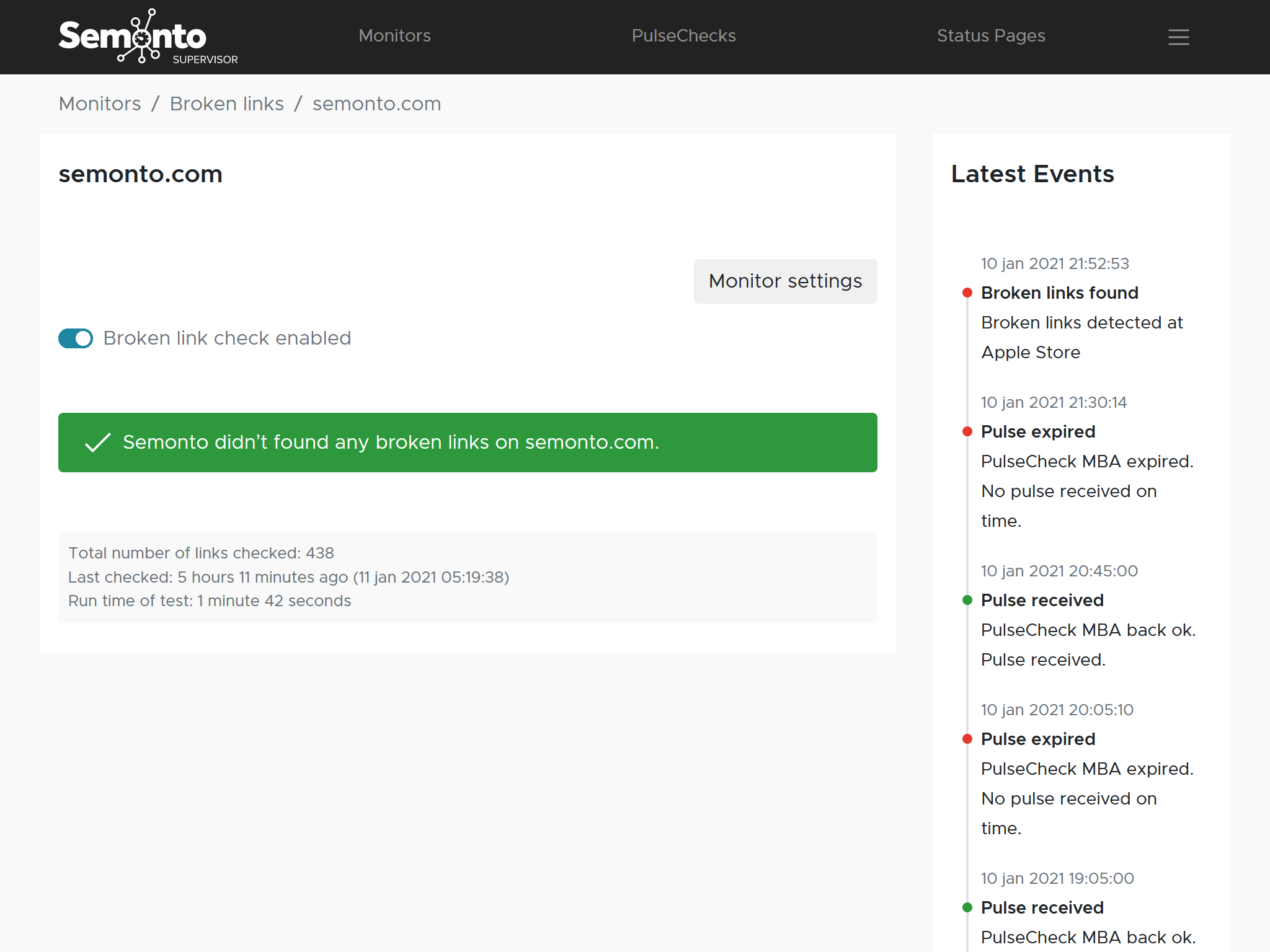
What Semonto will show you
Where the broken link can be found
When you scan for broken links using Semonto, the results page will tell you on which web page each broken link was found. It will also tell you which exact phrase on that page contains the link, also known as the anchor text. This helps you find the broken link quickly.
How critical the broken link is
Semonto helps you decide which links you should fix first. Major broken links get a red tag because they impact the user experience. Minor broken links are noticeable to your visitor but less severe, so they are marked with an orange tag. Unimportant broken links are not likely to be problematic because they are found in the backend of your website, so they get a notice: a grey tag. This classification by priority is perfect if you want to see what you should focus on first.
Which error it results in
When a link is broken, the visitor is directed to an error page. In most cases, this is an HTTP 404 ‘Page Not Found’-message, but sometimes it can be something else entirely. It can be a Connection Error, an HTTP 403 Access Denied-message or an SSL error. The type of error helps you understand the cause of the problem.
Start monitoring broken links with Semonto
Want to find the broken links on your website? Then give our tool Semonto a try. What makes Semonto better than other broken link monitors, is that it has a lot more features. Semonto does not only check for broken links; it also lets you know when your website is offline, slow to respond or has HTTPS security issues. Why not create a 14-day free trial? We will not ask for your credit card, and you can cancel at any time. Create a free trial here.



